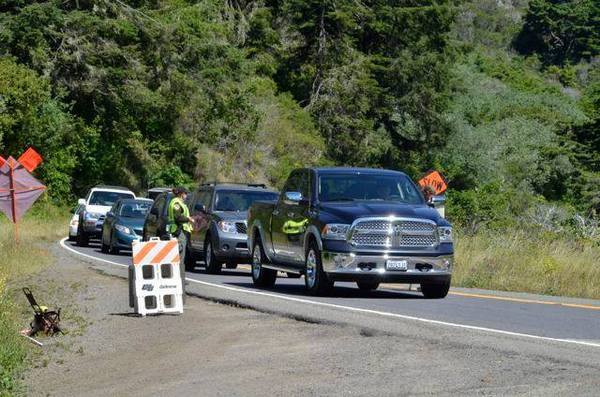Dozens Cited at NorCal State Abalone Checkpoint

State game wardens handed out 31 citations and warned several dozen additional fish harvesters at a wildlife law enforcement checkpoint near Jenner, California on Sunday. The checkpoint was part of a mounting effort by the California Department of Fish and Wildlife to educate sport fishers about the importance of protecting the state's remaining abalone.
The checkpoint, which had been announced publicly during the previous week, was looking for improperly taken or wrongly documented abalone, along with other marine game species.
Divers who collect red abalone along the Northern California coast are required to tag each abalone collected and record the animal on an abalone report card. Most of the citations issued came from violations of the tagging and report card regulation, though CDFW staff told ReWild that a few divers were cited for taking other species of fish that were too short.
Though seven species of abalone are native to California, only the red abalone can be taken legally from the state's waters, and only by recreational fishers. Most of the other species were overfished to the point where the fishery was closed, and CDFW estimates that hundreds of thousands of red abalone are taken illegally from the north coast. The tagging and report card requirement, first implemented in 2000, is designed to give CDFW a clearer picture of the legal recreational catch in the state.
Californians over age 16 need a valid fishing license and an abalone report card to take abalone, with an annual limit of 18 abalones, only 9 of which can be from either Sonoma or Marin counties.
The regulations are a bit complex, and one complication in the Jenner area is that abalone taken from Sonoma County are recorded differently from those taken in nearby Mendocino County. That complexity, says CDFW's Andrew Hughan, is why game wardens opted to issue warnings rather than citations for many of the divers with improperly documented abalones.
"Our law enforcement staff is pretty good at sniffing out which people are honestly confused, and which are trying to put one over on them," Hughan said.

Some of the citations were issued when wardens found divers with undersized abalone and other fish, but the majority, said Hughan, were for violations of the tagging and report card rule. More than 650 divers were inspected by CDFW Sunday, and doing the math would indicate that a large majority had their catch properly tagged and recorded.
Which might indicate that the CDFW's work to educate sport divers about their recording rules is working pretty well. In fact, this video shot at the checkpoint shows a number of divers cooperating cheerfully with the wardens. Makes sense: the report card system might be the only thing standing in the way of red abalone getting just as over-fished as their other cousins in California.


